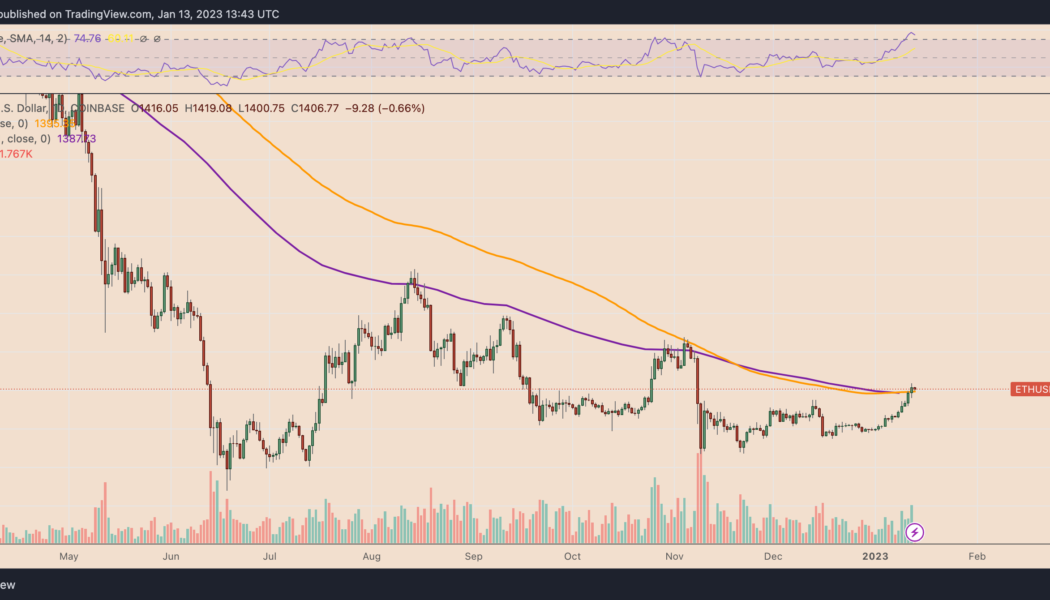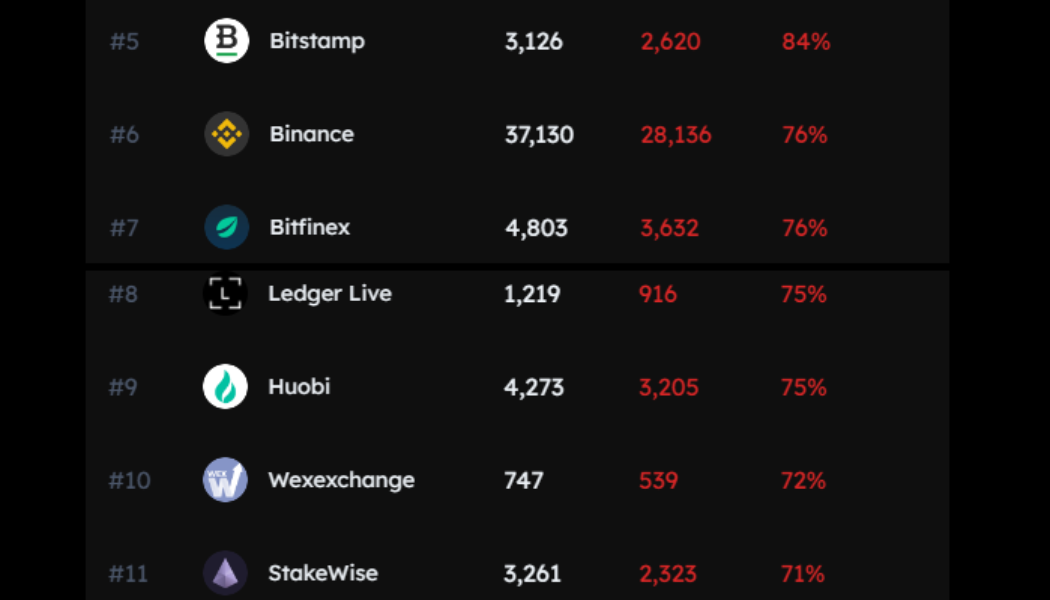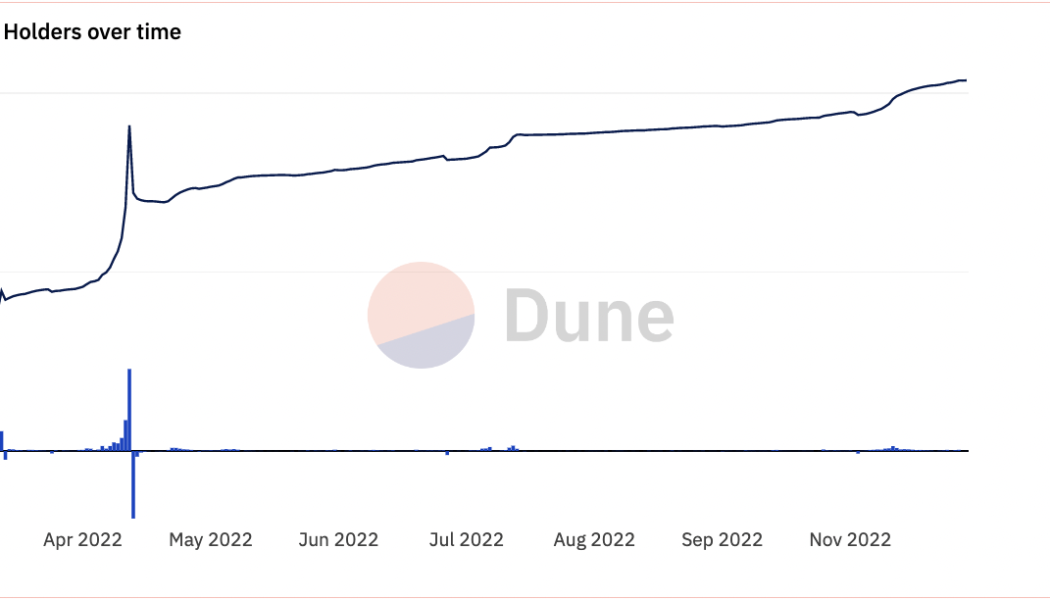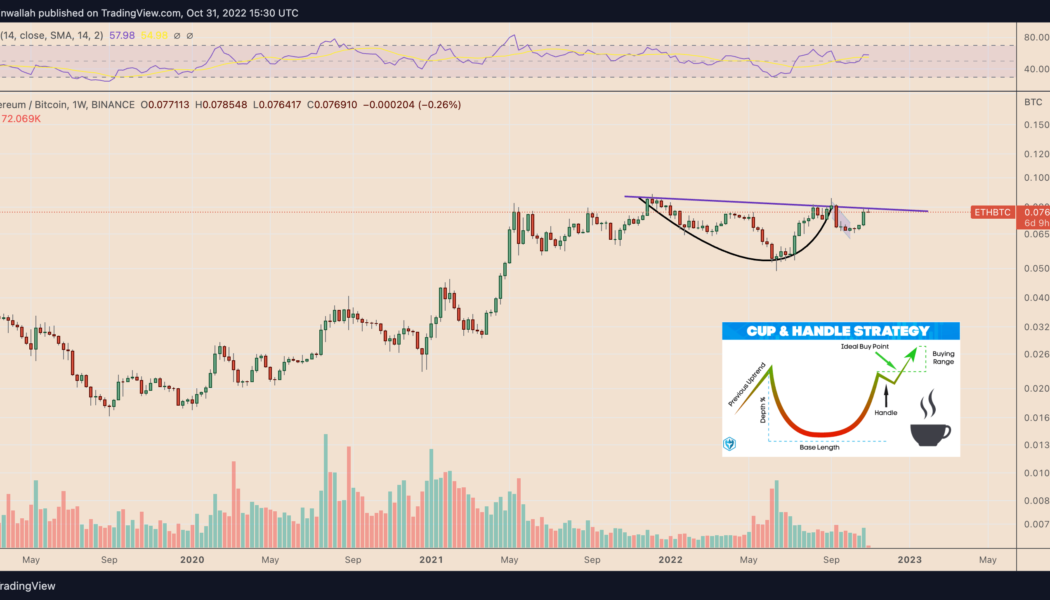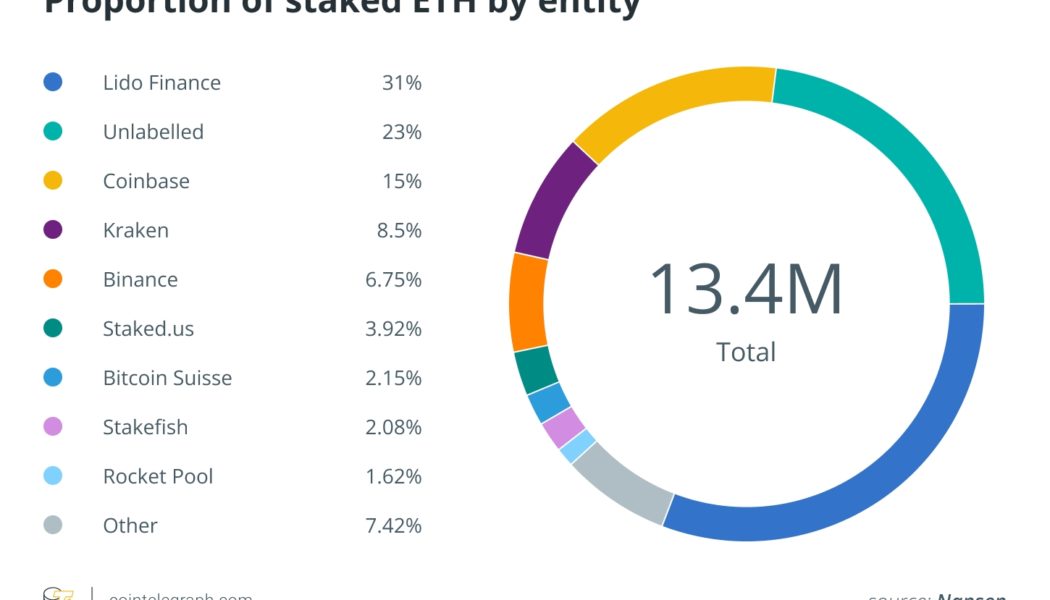Staking
Ethereum devs create ‘shadow fork’ to test conditions for Ether withdrawals
Developers are attempting to attack the forked testnet with malicious nodes to see if they can find vulnerabilities. News Own this piece of history Collect this article as an NFT As the proposed date for the Ethereum Shanghai update draws closer, developers have created a testing environment called a “shadow fork,” according to a Jan. 23 tweet thread by Go-Ethereum developer Marius Van Der Wijden. The new testnet appears to have been created in order to test the conditions needed for Ether (ETH) staking withdrawals, which are currently disabled but are intended to become enabled in the update. Withdrawal-Mainnet-Shadow-Fork-1 is finalizing It started out with a few issues because the config wasn’t correctly applied on geth (we disallow overriding the mainnet config). The config is ap...
Ethereum ‘shark’ accumulation, Shanghai hard fork put $2K ETH price in play
Ether (ETH) price technicals suggest that 35% gains are in play by March 2022 due to several bullish technical and fundamental factors. Ether price rises above two key moving averages On Jan. 8, Ether’s price crossed above its 21-week exponential moving average (21-week EMA; the purple wave) and 200-day simple moving average (200-day SMA; the orange wave). Historically, these two moving averages have separated bull and bear markets. When ETH’s price trades above them, it is considered to be in a bull market, and vice versa. ETH/USD daily price chart featuring 21-week EMA and 200-day SMA. Source: TradingView The last time Ether crossed above its 21-week EMA and 200-day SMA was in April 2022. But this was a fakeout, in part due to the collapse of Terra (LUNA) the following month. B...
Ethereum’s Shanghai upgrade could supercharge liquid staking derivatives — Here’s how
The crypto market witnessed the DeFi summer of 2020, where decentralized finance applications like Compound and Uniswap turned Ether (ETH) and Bitcoin (BTC) into yield-bearing assets via yield farming and liquidity mining rewards. The price of Ether nearly doubled to $490 as the total liquidity across DeFi protocols quickly surged to $10 billion. Toward the end of 2020 and early 2021, the COVID-19-induced quantitative easing across global markets was in full effect, causing a mega-bull run that lasted almost a year. During this time, Ether’s price increased nearly ten times to a peak above $4,800. After the euphoric bullish phase ended, a painful cool-down journey was exacerbated by the UST-LUNA crash which began in early 2022. This took Ether’s price down to $800. A ray of hope eventually...
ETH staking on top exchanges contributes to Ethereum censorship: Data
For most crypto ecosystems, being compliant with federal sanctions have a negative impact on its global reach. However, when it comes to Ethereum, investors have significant power to decide the degree of compliance the ecosystem obeys. Nearly 60% of all post-Merge Ethereum blocks comply with the United States sanctions put forth by the Office of Foreign Assets Control (OFAC). While the crypto community stands against this transformation, many fail to realize their own contribution to helping Ethereum attain total OFAC compliance. One of the biggest factors harming Ethereum’s credible neutrality is the use of censoring MEV relays by crypto ecosystems and exchanges. Miner extractable value (MEV) relays work as a mediator between block producers and block builders, which are being used ...
ApeCoin risks 30% crash after APE staking debut in December
The multi-week ApeCoin (APE) market rally is nearing exhaustion owing to a mix of technical and fundamental factors. Fundamental — ApeCoin Staking launch In the past two weeks, APE’s price is up over 50% after bottoming at around $2.60. The APE/USD rebound came in line with similar recovery moves elsewhere in the crypto market. But, it outperformed top assets, including Bitcoin (BTC) and Ether (ETH), as traders pinned their hopes on ApeCoin’s staking debut. The ApeCoin Staking feature will debut on Dec. 5 at apestake.io, according to its developer Horizon Labs. It will allow users to lock their APE holdings into four staking pools — ApeCoin pool, BAYC pool, MAYC pool, and Paired pool — that will allow them to earn yield periodically. The feature announcement has resulted ...
ApeCoin geo-blocks US stakers, two Apes sell for $1M each, marketplace launched
United States-based ApeCoin (APE) holders could miss out on staking rewards after the U.S. was added to a list of regions geo-blocked from using an upcoming APE staking service. Blockchain infrastructure company Horizen Labs, which is building the site on behalf of the ApeCoin decentralized autonomous organization (DAO), revealed the news in a Nov. 24 update regarding ApeStake.io on Twitter, saying “unfortunately, in today’s regulatory environment, we had no good alternative.” Ape Staking Update: Big thanks to the talented community devs for their helpful improvements. Bug Bounty AIP delayed us a bit, so we shortened the pre-deposit period by a week to keep our original 12/12 go-live. Alternate front-end sites going live. See card. pic.twitter.com/mgmP7X3SwQ — Horizen Labs (@HorizenLabs) N...
Bitcoin could become the foundation of DeFi with more single-sided liquidity pools
For many years, Ethereum reigned supreme over the decentralized finance (DeFi) landscape, with the blockchain serving as the destination of choice for many of the most innovative projects serving up their take on decentralized finance. More recently, however, DeFi projects have started to crop up across multiple ecosystems, challenging Ethereum’s hegemony. And, as we look to a future in which the technical problem of interoperability is solved, one unlikely contender for the role of DeFi power player emerges — Bitcoin (BTC). In that future, Bitcoin plays potentially the most important role in DeFi — and not in a triumphalist, maximalist sense. Rather, Bitcoin can complement the rest of crypto as the centerpiece of multichain DeFi. The key to this is connecting it all together so that Bitco...
Ethereum flashes a classic bullish pattern in its Bitcoin pair, hinting at 50% upside
Ethereum’s native token, Ether (ETH), looks poised to log a major price rally versus its top rival, Bitcoin (BTC), in the days leading toward early 2023. Ether has a 61% chance of breaking out versus Bitcoin The bullish cues emerge primarily from a classic technical setup dubbed a “cup-and-handle” pattern. It forms when the price undergoes a U-shaped recovery (cup) followed by a slight downward shift (handle) — all while maintaining a common resistance level (neckline). Traditional analysts perceive the cup and handle as a bullish setup, with veteran Tom Bulkowski noting that the pattern meets its profit target 61% of all time. Theoretically, a cup-and-handle pattern’s profit target is measured by adding the distance between its neckline and lowest point to the neckline level. The Ether-to...
Singapore MAS proposes to ban cryptocurrency credits
The Monetary Authority of Singapore (MAS) is introducing proposals to better regulate the cryptocurrency industry in the aftermath of the bankruptcy of the Singaporean crypto hedge fund Three Arrows Capital (3AC). The central bank of Singapore has issued two consultation papers on proposals for regulating the operations of digital payment token service providers (DPTSP) and stablecoin issuers under the Payment Services Act. Published on Oct. 26, both consultation papers aim to reduce risks to consumers from crypto trading and improve standards of stablecoin-related transactions. The first document includes proposals for digital payment token (DPT) services or services related to major cryptocurrencies like Bitcoin (BTC), Ether (ETH) or XRP (XRP). According to the authority, “any form of ...
Ether staking could trigger securities laws — Gensler
Ethereum’s upgrade to proof-of-stake may have placed the cryptocurrency back in the crosshairs of the Securities and Exchange Commission (SEC). Speaking to reporters after the Senate Banking Committee on Sept. 15, SEC chairman Gary Gensler reportedly said that cryptocurrencies and intermediaries that allow holders to “stake” their crypto may define it as a security under the Howey test, according to The Wall Street Journal. “From the coin’s perspective […] that’s another indicia that under the Howey test, the investing public is anticipating profits based on the efforts of others,” WSJ reported Gensler as saying. The comments came on the same day as Ethereum’s (ETH) transition to proof-of-stake (PoS), meaning the network will no longer rely on energy-intensive “...
Ethereum may now be more vulnerable to censorship — Blockchain analyst
Ethereum’s upgrade to proof-of-stake (PoS) may make it more vulnerable to government intervention and censorship, according to the lead investigator of Merkle Science. Speaking to Cointelegraph following the Ethereum Merge, Coby Morgan, a former FBI analyst, and the Lead Investigator for crypto compliance and forensic firm Merkle Science expressed his thoughts on some of the risks posed by Ethereum’s transition to PoS. While centralization issues have been broadly discussed leading up to The Merge, Moran suggested the prohibitive cost of becoming a validator could result in the consolidation of validator nodes to the bigger crypto firms like Binance, Coinbase, and Kraken. In order to become a full validator for the Ethereum network, one is required to stake 32 Ether (ETH), which is w...
Liquid staking is key to interchain security
Bitcoin’s genesis in 2009 will probably go down in history as one of the most notable technological events of all time. Demonstrating the first real use case for the immutable, transparent and tamper-proof ledgers — i.e., blockchain — it established the cornerstone for developing the crypto and other blockchain-based industries. Today, just over a decade later, these industries are thriving. The total crypto market capitalization hit an all-time high of $3 trillion at its peak in November 2021. There are already more than 300 million crypto users worldwide, while forecasts suggest the figure may cross 1 billion by December 2022. Although phenomenal, this journey has merely begun. Several factors have contributed to the blockchain and cryptocurrency industry’s success so far. But abov...
- 1
- 2


